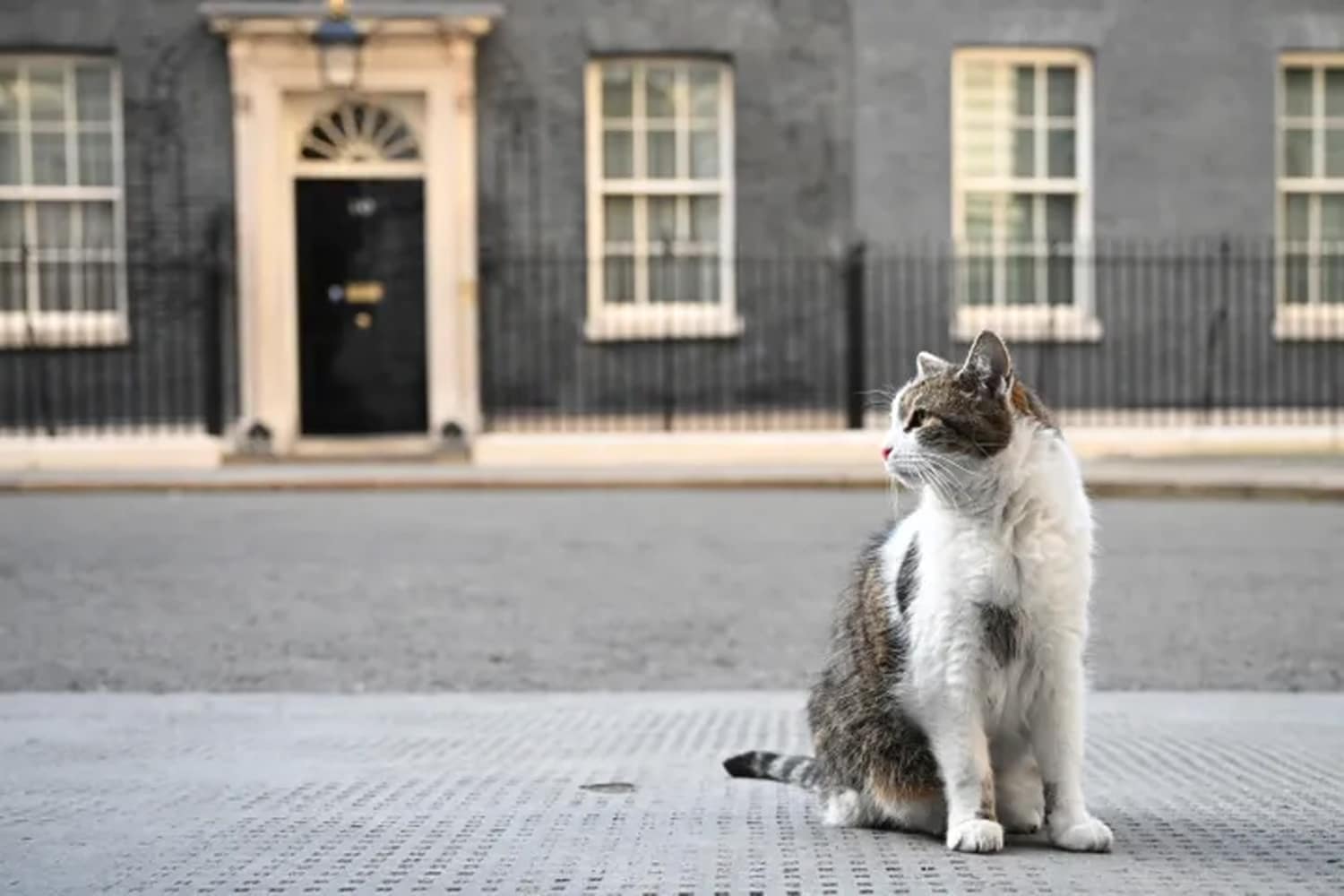Cat v Fox: What made Downing Street’s Larry so brave?

The chief mouser was seen on camera chasing away a larger intruder on his patch. Experts explain his behaviour.
Larry, the Downing Street cat, stepped up from mouser duties this week to chase an urban fox off his patch.
The burly tabby was caught on camera intently stalking the fox before launching into a fully fledged pursuit when the trespasser tried to take cover in a flowerbed.
Larry emerges the victor, but the encounter has led some to wonder what gives cats the brazen confidence to take on larger animals such as foxes or dogs.
Experts say cat behaviour is strongly shaped by instincts that date back to their wild ancestors. Domestic cats are far more similar, genetically and in behaviour, to wild relatives than dogs are to wolves. As solitary hunters, establishing and maintaining control of territory in which to hunt and mate is central to the cat lifestyle.
“Cats will confront most other animals if threatened, even dogs,” said Nicky Trevorrow, a behaviour manager at the charity Cats Protection. “This is because they’re naturally territorial – it’s an ingrained instinct – so will often challenge any other animals on their territory.”
Cats typically have favoured areas to sleep and eat and mark out their “home range” by spraying, rubbing their facial scent markers on objects and scratching around the area to warn off other cats. Cats patrol their territory along a network of paths, often on a regular schedule, allowing neighbouring cats to avoid encounters that could result in a standoff.
A cat’s sex (unneutered males tend to be more confrontational), life experience and disposition play a role in how it will react to any encroachment on their territory. “There is a lot of individual variation in how strongly they will react to perceived intruders, and whether they will take on animals, such as foxes, that are larger than themselves,” said Prof James Serpell, an animal welfare expert at the University of Pennsylvania. “If a cat’s first encounter with a fox causes that fox to run away, it will likely embolden the cat in any subsequent encounters with foxes.”
Foxes may be bigger with more powerful jaws, but evidence suggests other cats often prove more formidable adversaries. A 2013 analysis of VetCompass, a clinical database of vet visits, identified five confirmed and nine suspected fox fight injuries for each 10,000 vet visits by cats (there was no data to indicate how foxes fared in these scuffles). This compared with 541 in 10,000 for cats presented with cat bite injuries and 196 in 10,000 cats being presented after a road traffic accident.
“So to put fox attacks into context, other cats (40 times greater risk) and cars (14 times) appear to present much greater dangers to cats than foxes,” concluded Pete Wedderburn, a vet and broadcaster, who carried out the fox risk assessment.
“Cats and foxes usually pose no threat to one another and it’s unusual for any harm to be caused to either of them when in close proximity,” said Trevorrow.
There may be some instinctive animosity between cats and foxes, as there is between cats and dogs, due to the species once competing for food. “Ancestrally, foxes competed directly with wildcats for food such as rodents and birds, and adult foxes probably posed a predation threat to young wildcats and kittens,” said Serpell.
Dennis Turner, the director of the Institute for Applied Ethology and Animal Psychology near Zurich, said: “Larry obviously feels at home at No 10 and is a large male. Although males, even intact ones, are usually more tolerant of other males – they have other things on their minds – they can still chase intruders away from their core areas of activity. Those include cats unknown to them, dogs and even foxes as in this case. Obviously this fox was one of the urban foxes living in and around London – but I bet it won’t come back for a while after this.”
The tale of the tape
Cat
Weight: 4-5kg
Height: 23–25cm
Length: 46cm (without tail)
Number of teeth: 30
Top speed: 30mph
Diet: hyper-carnivore. Includes cat food
Strengths: stealthy; can see five or six times better than humans in twilight conditions, excellent climber
Fox
Weight: 6.5kg
Height: 35–50cm
Length: 45-90cm (without tail)
Number of teeth: 42
Top speed: about 30mph
Diet: omnivorous. Includes berries, grass, birds, squirrels, rabbits, mice, beetles and crayfish and scraps of food from bins
Strengths: powerful canine teeth, can hear a mouse squeak from 30 metres away, can dig tunnels under fences and walls
(Article source: The Guardian)





